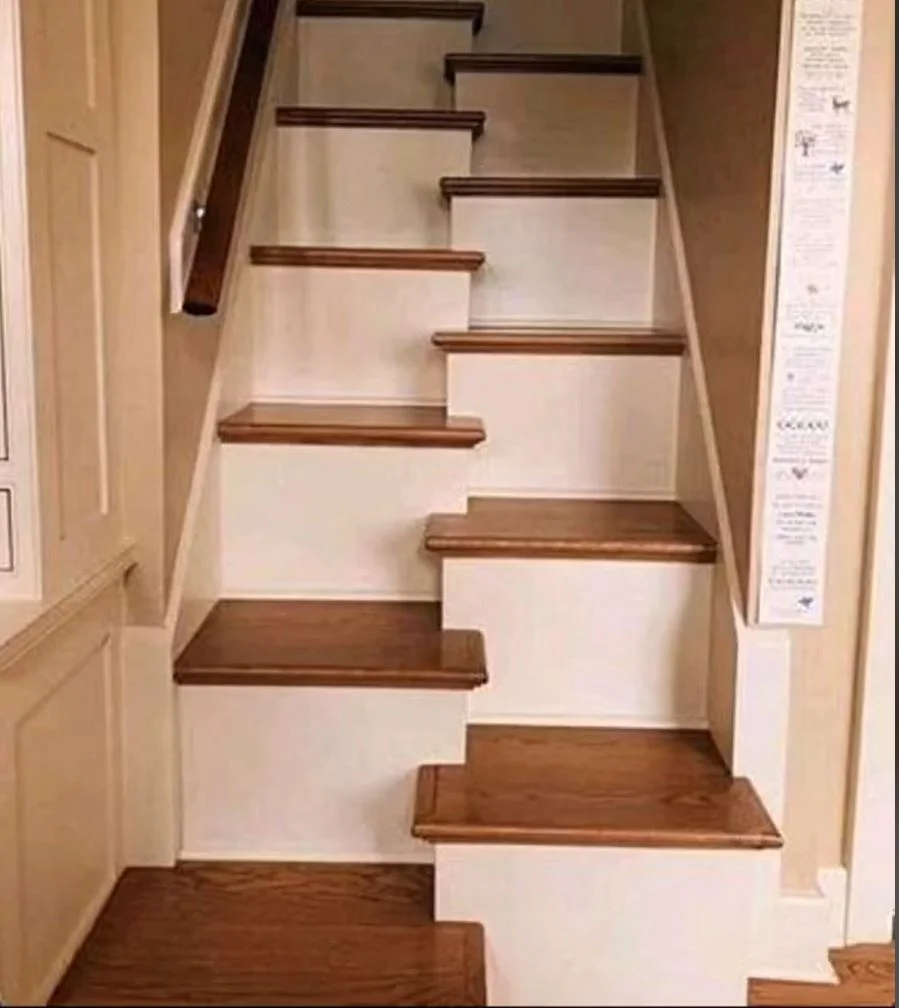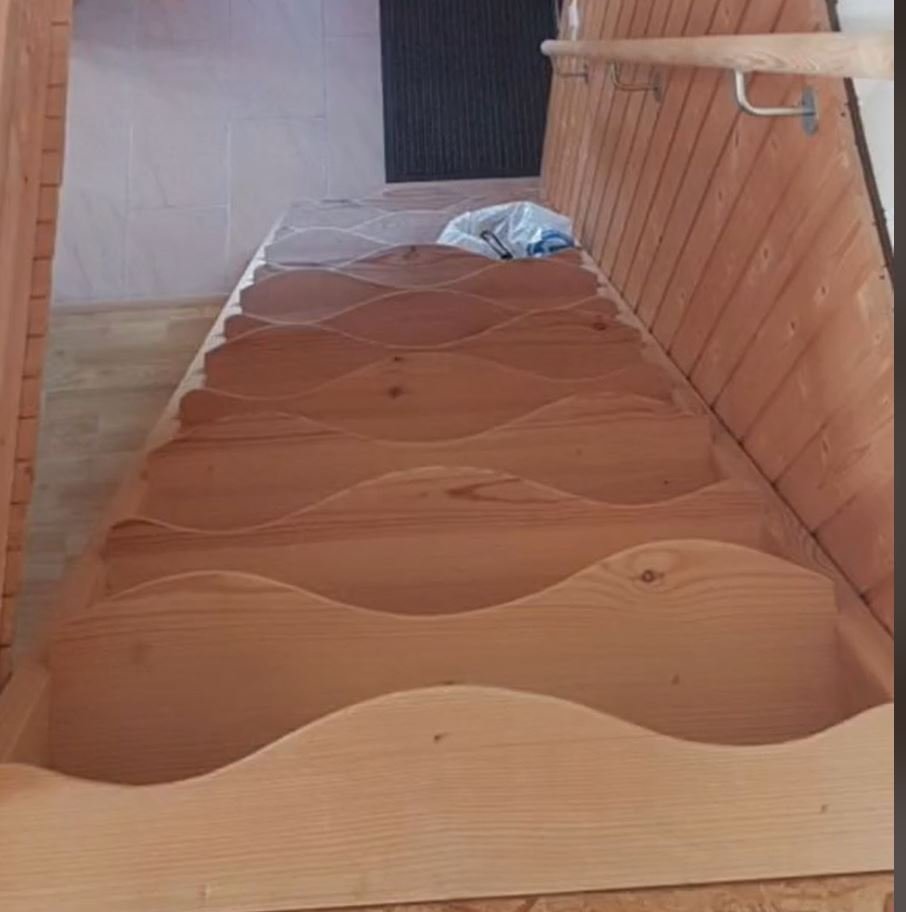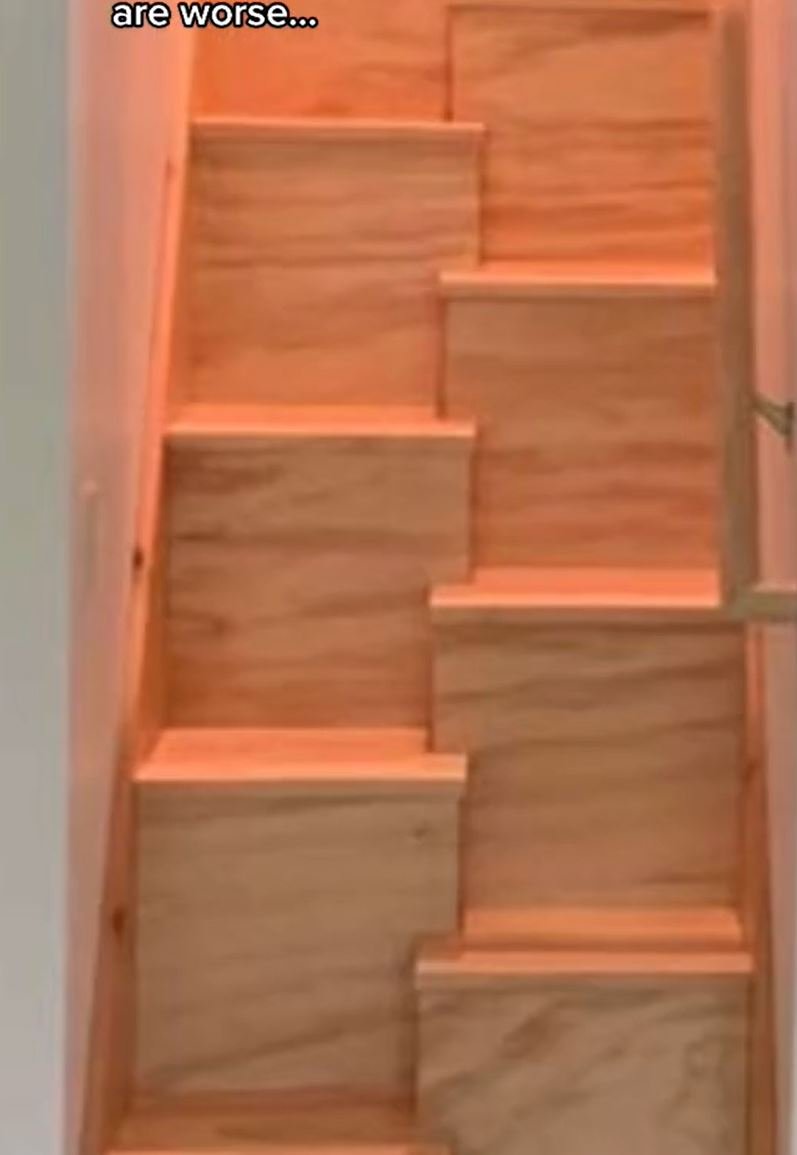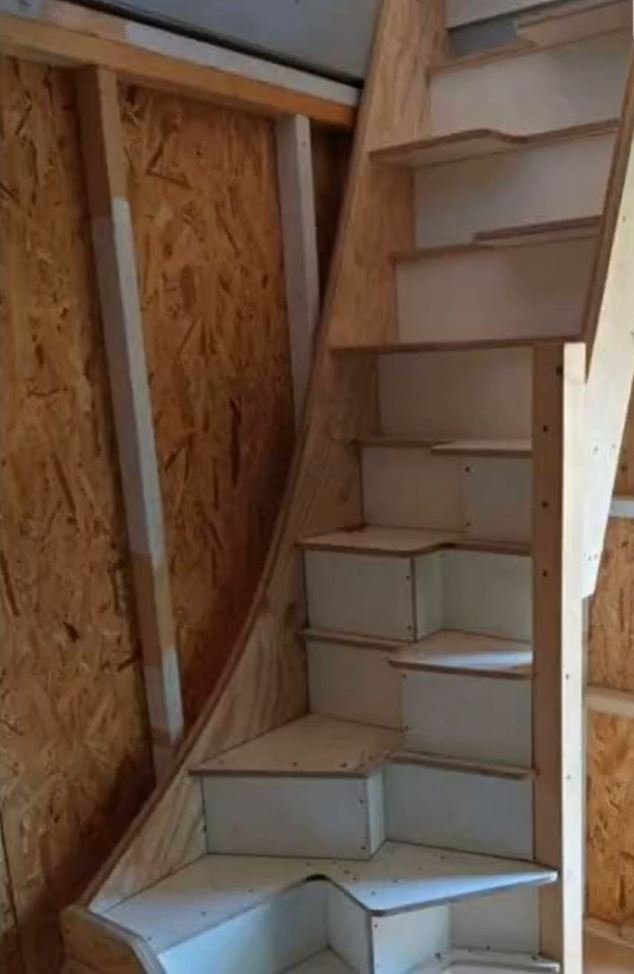Witches’ stairs are a strange but interesting design feature that became popular on TikTok a couple of years ago. Even though they have an unusual history, their name doesn’t really have to do with superstition. Instead, these stairs are a clever design choice. When made and installed correctly, they can be both useful and nice to look at!
Witches’ Stairs aren’t what they Appear.

While the stories about witches’ stairs might sound more interesting, they actually have a very practical purpose. They are really useful in homes with little space, like attics, lofts, and tiny houses. Witches’ stairs are designed to save space while still allowing you to go from one floor to another. Architects often call them “alternate tread stairs.”
How Witches’ Stairs Function

Photo Credit: itsthatrealestatechick | TikTok
Witches’ stairs are designed to save space in two ways. First, each step is only half as wide as regular steps, and the steps are staggered. This makes the staircase narrower than a traditional one. These smaller stairs can also be used for extra storage, like for books or displaying items. According to Scott Schuttner, who wrote “Basic Stairbuilding,” the distance between the steps on one side of an alternating-tread stair is twice the height of the rise, which gives you more space on the steps and makes them safer.
Besides being practical, witches’ stairs meet building codes and safety standards in the U.S. A standard staircase is usually 3 feet wide, while a residential witches’ staircase is typically between 27 and 30 inches wide.
Real Origins

Photo Credit: itsthatrealestatechick | TikTok
In 1985, a businessman named J.M. Lapeyre created a metal version of witches’ stairs. He thought these stairs could be a safe alternative to ladders in commercial and warehouse settings, especially in tight spaces where ladders might not be safe. This design is also used on commercial ships and oil rigs, and it can be called ship stairs or ship ladders, in addition to witches’ stairs and alternate tread stairs.
Misconception

Photo Credit: itsthatrealestatechick | TikTok
When videos of witches’ stairs first appeared on TikTok in 2021, they were linked to an urban legend. According to this legend, these staircases were built in 17th-century Massachusetts to keep witches away during the Salem witch trials because “witches can’t climb up them.” This idea has been proven false, but another rumor suggests that Thomas Jefferson came up with the design. Because of this, witches’ stairs are sometimes called Jeffersonian or Jefferson stairs. However, an original version of the design was also mentioned in a book called “Monckton’s One Plane Method Of Hand Railing and Stair Building,” published in 1888.
Debunking the Myth

Photo Credit: conspiracy___time | TikTok
The exact origins of witches’ stairs are a bit unclear, but one thing is clear: there’s no historical evidence that they were designed to keep witches away. Historian Robin Briggs has studied many historical sources and found no mention of stairs that could disable witches. Interestingly, some people with these unique staircases also buried “witch bottles” or included dead cats in their homes for protection against witchcraft, but Briggs calls this idea “pure disinformation.” He notes that the closest belief was that putting a broom over the door would trap a witch inside.
While it’s fun to think about myths and legends, it’s also interesting to know the real history of witches’ stairs. Regardless, they offer a unique and decorative alternative to regular staircases, adding a fun and quirky touch to home design.
Granddad’s Hidden Secret: Girl Discovers Stash in Forbidden Old Mattress After His Death

Brooke’s Discovery: Uncovering Truth and Justice
After her grandfather’s death, Brooke stood in his bedroom, memories flooding back. She gazed at the familiar bed, recalling his stern warning: “Don’t touch that mattress; it has secrets.” Drawn by curiosity, she lifted the mattress and discovered a hidden stash—old newspaper clippings, photographs, and a leather-bound book documenting her parents’ fatal car accident.
As she sifted through the papers, her heart raced. Her grandfather believed the police had covered up the truth, favoring a wealthy drunk driver. Fueled by determination, Brooke vowed to uncover the injustice that had long haunted her family.
The next day, she visited the local newspaper, presenting her findings. The editor, intrigued by her passionate plea for justice, agreed to publish the story. The article quickly gained traction, igniting outrage in the community and prompting the police to reopen the case.
Brooke faced scrutiny and threats, but she remained undeterred, sharing her story and rallying support on social media. With each revelation, more families came forward, exposing a web of corruption that spanned the town.
As the trial approached, Brooke testified, sharing her pain and her grandfather’s relentless search for truth. When the jury returned a guilty verdict against the driver, relief washed over her. Justice had been served.
In the aftermath, changes swept through the town, and Brooke found purpose in helping others seek justice. Her grandfather’s legacy lived on, inspiring her to continue the fight against corruption and advocate for those silenced by power.



Leave a Reply